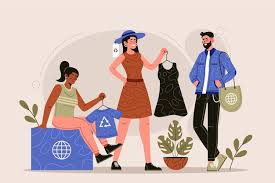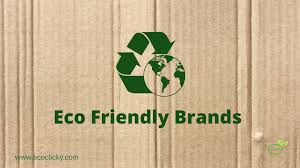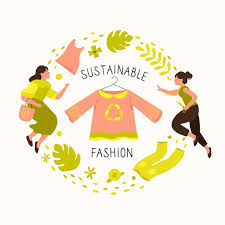With sustainability on the rise more and more people are changing their minds. As it becomes clear to consumers the effects the fast fashion industry is having on the planet, eco-friendly brands and trends are leading the way to a more sustainable and ethical future. From new materials to making fashion practices circular, this article looks at the emergence of sustainable, or eco-conscious, fashion — the labels leading the way and the fabrics, trends and even attitudes changing how we approach new clothes.


The Importance of Sustainable Fashion
The fashion industry is one of the biggest producers of pollution in the world, creating 92 million tons of textile waste every year and consuming massive amounts of water and energy. What is more, the popularity of fast fashion (i.e., inexpensive clothes produced quickly) is exacerbating this environmental problem of overconsumption, leading to waste.
Sustainable fashion seeks to:
Use eco-friendly materials to minimize environmental pollution.
Advocate for ethical production via fair wages and safe working conditions. Encourage circularity with recycling, upcycling, and second-hand markets.
Switching to sustainable fashion isn’t just a trend; it’s a movement toward a better planet.


Sustainable Fashion Trends For 2024
1.Circular Fashion
Circular fashion is about designing clothes to be reused, recycled or composted after their lifetime. Designers are implementing “take-back” programs and ambitious recycling systems to prevent clothes from entering landfills.
Tip: Find brands that have recycling programs and give you the option to do so for a discount on new clothes or repurpose your old clothes.
2. Plant-Based and Recycled Materials
The shift to organic and recycled materials is growing rapidly. Fabrics like organic cotton, Tencel (made from wood pulp), hemp, and recycled polyester are replacing traditional materials that deplete natural resources.
- Trend Alert: Mushroom leather, pineapple leather (Piñatex), and apple leather are innovative vegan alternatives that replicate the feel of traditional leather.
3. Minimalism and Capsule Wardrobes
The “buy less, buy better” movement encourages investing in high-quality, timeless pieces that last for years. Capsule wardrobes reduce waste and promote a conscious approach to shopping.
- Tip: Stick to versatile, neutral tones that can be mixed and matched for multiple outfits.
4. Second-Hand Shopping and Upcycling
Thrift stores, consignment shops, and online platforms like Depop, Poshmark, and ThredUp are making second-hand shopping fashionable. Upcycling—transforming old clothes into new items—allows for creativity while reducing waste.
5. Transparent and Ethical Brands
Brands are increasingly transparent about their supply chains, showing where materials are sourced and how workers are treated. Certifications like Fair Trade, GOTS (Global Organic Textile Standard), and B Corp help consumers identify truly ethical companies.


Leading Eco-Friendly Brands You Need to Know
1. Patagonia
Known as a pioneer in sustainable fashion, Patagonia focuses on recycled materials, fair trade production, and promoting circular fashion through their repair and resale program, “Worn Wear.”
2. Reformation
Reformation combines style with sustainability, using eco-friendly fabrics and reducing water waste. Their transparent practices allow customers to see the environmental footprint of each product.
3. Stella McCartney
As a luxury leader in sustainable fashion, Stella McCartney is committed to cruelty-free and innovative materials like mushroom leather and recycled fabrics. The brand sets a standard for ethical luxury fashion.
4. Everlane
Everlane emphasizes “radical transparency” by sharing the true cost of production and ethical labor practices. Their sustainable line, ReNew, uses recycled plastics to create outerwear and accessories.
5. Pangaia
Pangaia merges science and fashion, creating innovative clothing using natural fibers like organic cotton, seaweed, and plant dyes. Their focus on minimal designs makes sustainability look effortlessly chic.
6. Veja
Veja revolutionized footwear by creating stylish, sustainable sneakers made from organic cotton, wild rubber from the Amazon rainforest, and recycled materials. They are proof that fashion and ethics can coexist.
7. ThredUp
ThredUp is one of the largest online thrift stores, promoting circular fashion by offering affordable second-hand clothing and reducing textile waste.


How to Embrace Sustainable Fashion
You don’t need to overhaul your entire wardrobe to embrace sustainable fashion. Here are simple ways to start:
1. Shop Less, Choose Well
Focus on quality over quantity. Invest in timeless pieces that are versatile, durable, and ethically made.
2. Buy Second-Hand
Thrift stores and resale platforms offer unique, affordable, and sustainable alternatives to fast fashion.
3. Support Sustainable Brands
Research brands that prioritize sustainability and transparency. Look for certifications like Fair Trade, GOTS, or B Corp.
4. Take Care of Your Clothes
Extend the life of your wardrobe by washing clothes less frequently, air-drying them, and repairing any minor damage.
5. Rent or Swap Clothes
For special occasions, consider renting outfits instead of buying new ones. Clothing rental services reduce waste while saving money.
6. Upcycle and DIY
Get creative by upcycling old clothes into new pieces or accessories. This reduces waste and gives your wardrobe a unique touch.


The Future of Sustainable Fashion
The future of fashion lies in innovation and conscious consumerism. As brands adopt advanced technologies like biodegradable fabrics and zero-waste production, and consumers make informed choices, sustainable fashion will continue to thrive.
Moreover, governments and organizations are stepping up with initiatives to regulate waste and improve labor practices in the fashion industry, encouraging a systemic shift.
Conclusion
Sustainable fashion is more than just a passing trend—it’s a powerful movement that benefits both people and the planet. By supporting eco-friendly brands, adopting circular fashion habits, and making mindful shopping choices, you can be part of the change. Together, we can build a wardrobe that reflects our values without sacrificing style or quality.
Embrace sustainability, look good, and feel great knowing you’re contributing to a greener, more ethical future. Fashion doesn’t have to cost the earth—choose wisely, wear proudly.








